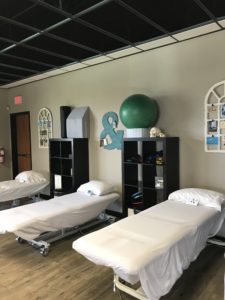 At Majerus & Co. we take advantage of the breadth and depth of our staff’s experience when diagnosing and treating spinal pain which originates in the musculoskeletal system. Whether your pain is a new problem or a recurring issue, our fresh perspective and extensive “toolbox” of management techniques may be the solution. We call upon the principles of manual and massage therapy, appropriate postural correction, core strengthening, structural integration, and the McKenzie approach along with home exercise programs to provide long term self management.
At Majerus & Co. we take advantage of the breadth and depth of our staff’s experience when diagnosing and treating spinal pain which originates in the musculoskeletal system. Whether your pain is a new problem or a recurring issue, our fresh perspective and extensive “toolbox” of management techniques may be the solution. We call upon the principles of manual and massage therapy, appropriate postural correction, core strengthening, structural integration, and the McKenzie approach along with home exercise programs to provide long term self management.
A comprehensive exam is key; starting from the top and moving through the cervical and thoracic spine, into the lumbopelvic region, and ending up where the feet hit the ground will reveal the origin of your pain. As the issues contributing to your spinal pain are better understood, your therapist can help you start making changes right away that will put you on the path of pain free function.
Just a few definitions:
- Manual Therapy refers to hands on gentle mobilization of joint, muscle, tendon, or other tissues. At times, muscle energy (manually guiding the patient’s own contractive force) or Strain Counterstrain (finding and releasing trigger points) are helpful.
- Postural Correction refers to assisting patients in learning and maintaining appropriate posture in all required positions….at home, at work, while driving, and during recreational and athletic or leisure activities.
- Core Strengthening is important because it creates an internal “corset” to support and protect the structures of your spine. This can be accomplished with traditional stabilization exercise. Pilates focuses on the use of controlled breathing and exercises on a mat or a piece of equipment called a Reformer to lengthen muscles as they are strengthened from their base at core structures. This results in strength without sacrificing flexibility.
- The McKenzie Approach emphasizes accurate mechanical diagnosis (which research has shown to be as reliable as XRay, MRI, and other tests) of spinal problems and strategies to address these dysfunctions which can be continued at home. Ultimately, self-treatment has been shown to minimize the 60-75% of recurrent back pain episodes that some patients experience throughout life. This independence results in improved quality of life and fewer clinic visits.
Our patients rarely leave the clinic without some type of home program. It is part of our practice pattern as PT’s to equip our patients to graduate from ongoing visits with us. We wish to foster independence — whether that is in the form of specific exercises done at home daily, a plan for progression at the gym or on the field, a pair of orthotics, or a way to reinforce good posture, or the strength and flexibility to use more efficient movement patterns each day — you’ll get it.
